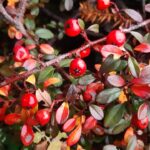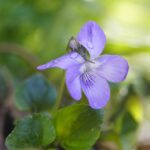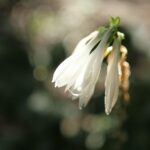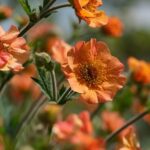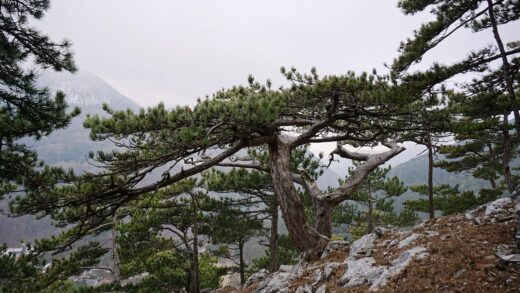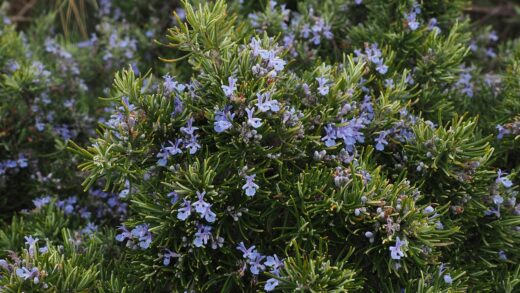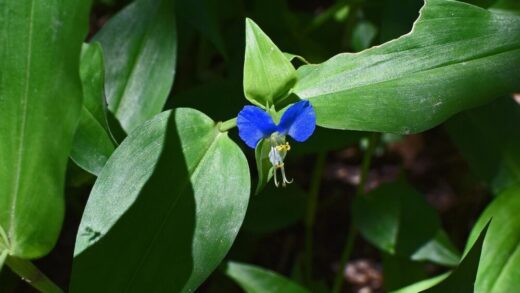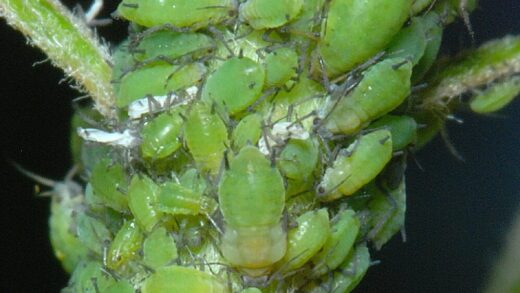Understanding the water requirements of the blue eryngo is primarily a matter of appreciating its profound drought tolerance, a characteristic derived from its native habitats on dry, sun-baked grasslands and coastal plains. This is a plant that has evolved to thrive, not just survive, in conditions of low moisture, thanks to its incredibly deep and efficient taproot system. Consequently, the most common mistake in cultivating this perennial is providing too much water, which can lead to a host of problems far more severe than any drought-related stress. Proper irrigation, therefore, hinges on a philosophy of “less is more,” especially once the plant has become established in the garden landscape.
The key to successful watering lies in recognizing the different needs of a newly planted blue eryngo versus a mature specimen. A young plant, during its first growing season, requires a period of consistent moisture to encourage the development of its crucial taproot. This initial phase is the only time the plant benefits from regular human intervention in its water supply. However, as the plant matures and its root system delves deeper into the soil profile, its reliance on supplemental irrigation diminishes dramatically, transitioning to a state of near self-sufficiency in most climates.
The physical characteristics of the plant itself offer clues to its water-wise nature. The waxy, often spiny leaves are designed to minimize water loss through transpiration, and the entire structure of the plant is geared towards conserving moisture. Overwatering disrupts this natural balance, leading to weak, floppy growth and, most critically, creating an environment ripe for fungal diseases like root rot. Therefore, learning to read the plant and the soil, rather than adhering to a rigid watering schedule, is essential for its long-term health and vitality.
Ultimately, mastering the irrigation of blue eryngo involves a shift in the typical gardening mindset. Instead of aiming to keep the soil consistently moist, the goal is to allow it to dry out thoroughly between waterings, mimicking the natural wet-dry cycles of its native environment. This approach not only prevents the dangers of overwatering but also encourages the root system to grow deeper and stronger in its search for moisture, further enhancing the plant’s innate resilience and drought tolerance. In doing so, you create a healthier, more structurally sound plant that fully embodies its rugged and beautiful character.
Understanding the plant’s drought tolerance
The exceptional drought tolerance of the blue eryngo is not a matter of chance but a direct result of its sophisticated root architecture. The plant’s most significant feature below the soil is its long, thick taproot, which can penetrate deep into the ground, often reaching several feet down. This allows it to access moisture reserves that are unavailable to more shallow-rooted plants, providing a reliable water source even when the surface soil is completely dry. This adaptation is what makes the blue eryngo a cornerstone species for xeriscaping and water-wise gardening, as it can withstand extended periods without rainfall or supplemental irrigation.
More articles on this topic
This deep taproot system takes time to develop, which is why the plant’s needs change as it matures. During its first year, the primary focus of the plant’s energy is on growing this essential root structure. Once established, the taproot acts as both an anchor and a lifeline, making the plant incredibly resilient. It also explains why the blue eryngo resents being transplanted; any damage to this central root can severely compromise its ability to find water and nutrients, often proving fatal.
The foliage of the blue eryngo also plays a role in its ability to conserve water. The leaves are typically tough and leathery, often with a waxy coating that reduces moisture loss through transpiration. The spiny nature of the bracts and leaves further helps to minimize the impact of drying winds. These above-ground characteristics work in concert with the subterranean root system to create a plant that is perfectly equipped to handle dry, challenging conditions, making it an ideal choice for gardens in arid climates or for areas of the garden that are difficult to water regularly.
It is this inherent ability to thrive in dry conditions that makes overwatering such a significant threat. The root system is adapted to soil that is well-aerated and periodically dry; it is not equipped to handle the anaerobic conditions of constantly saturated soil. Providing too much water essentially drowns the roots, depriving them of oxygen and creating the perfect environment for rot-causing fungi. Therefore, a gardener’s success with this plant depends on respecting and working with its natural adaptations rather than trying to force it into a high-moisture regimen.
Irrigation for newly established plants
While mature blue eryngo plants are paragons of drought tolerance, newly planted specimens require more attentive irrigation to ensure they establish successfully. During the first growing season, the primary goal is to encourage the plant to develop its deep and extensive taproot system, which will be its lifeline in future years. To support this, you must provide consistent and adequate moisture, as the young plant’s root system is not yet large enough to seek out water from deep within the soil profile. This initial period of care is a critical investment in the plant’s long-term health and resilience.
More articles on this topic
Immediately after planting, give the blue eryngo a thorough and deep watering to settle the soil around the roots and eliminate any air pockets. For the next several weeks, monitor the soil moisture regularly, aiming to keep the root zone consistently moist but not waterlogged. A good rule of thumb is to check the soil about two inches down; if it feels dry to the touch, it is time to water again. This might mean watering once or twice a week, depending on your climate, soil type, and rainfall.
The method of watering is just as important as the frequency during this establishment phase. Avoid light, shallow sprinklings, which only wet the surface of the soil and encourage the development of a weak, shallow root system. Instead, use a soaker hose or a watering can to apply water slowly and deeply at the base of the plant. This ensures that the moisture penetrates down into the soil, encouraging the roots to grow downwards in pursuit of it, which is precisely what is needed to form a strong taproot.
As the season progresses and you observe signs of vigorous new growth, you can begin to gradually reduce the frequency of watering. This process, often called “weaning,” helps the plant transition from its initial dependence on supplemental irrigation to the self-sufficient state it will maintain once mature. By the end of its first full growing season, the plant should be well on its way to developing the robust root system it needs, requiring only occasional watering during the most extreme periods of drought.
Watering mature plants
Once a blue eryngo plant has successfully navigated its first year and is considered established, its water requirements decrease dramatically. A mature plant with a well-developed taproot is exceptionally self-sufficient and thrives with minimal intervention. In many regions, the natural rainfall is entirely adequate to meet the plant’s needs, and supplemental irrigation is often unnecessary and can even be detrimental. The primary principle for watering mature blue eryngo is to do so only when absolutely necessary, which is typically only during prolonged and severe drought conditions.
When a mature plant does require watering due to extreme heat and lack of rain, it is crucial to do so deeply and infrequently. A light sprinkling will not be effective, as the water will evaporate from the surface without ever reaching the plant’s deep roots where it is needed most. The best approach is a long, slow soaking that allows the water to penetrate deep into the soil profile. This single, deep watering event is far more beneficial than several shallow waterings and reinforces the plant’s natural deep-rooting tendency.
Observing the plant itself is the best guide to its watering needs. A healthy, well-hydrated blue eryngo will have firm leaves and sturdy stems. If you notice the basal foliage beginning to wilt or look stressed, and this is coupled with bone-dry soil and a long period without rain, it may be a sign that the plant would benefit from a deep drink. However, it is important to distinguish this from heat stress on a very hot day, where some wilting might be natural, with the plant recovering as temperatures cool in the evening.
It is essential to remember that for mature blue eryngo, the danger of overwatering far outweighs the risk of underwatering. The plant is far more likely to succumb to root rot from excessive moisture than it is to perish from drought. Therefore, always err on the side of caution and keep the soil on the drier side. This hands-off approach not only benefits the plant but also makes it an excellent, low-maintenance choice for the modern, water-conscious gardener.
Signs of overwatering and underwatering
Recognizing the signs of improper watering is a key skill in cultivating a healthy blue eryngo. Because the plant is so drought-tolerant, the symptoms of overwatering are far more common and significantly more dangerous. The most telling sign of too much moisture is yellowing of the lower, basal leaves, a condition known as chlorosis. This occurs because the waterlogged soil prevents the roots from taking up essential nutrients. If the overwatering is severe or prolonged, the base of the plant’s stem may become soft and mushy, which is an indication that fatal crown or root rot has begun.
Another symptom of excessive moisture is a general lack of vigor or a wilting appearance, which can be confusingly similar to the signs of underwatering. However, if the plant is wilting while the surrounding soil is consistently damp or wet to the touch, overwatering is almost certainly the culprit. The wilting happens because the roots are drowning, deprived of oxygen, and can no longer function properly to supply the rest of the plant with water. In overly rich and moist conditions, you may also see weak, floppy stems that are unable to support the weight of the flower heads.
The signs of underwatering, while much rarer, are also important to identify, especially in very young plants or in times of extreme, unprecedented drought. The most obvious symptom is wilting foliage that does not recover in the cooler evening temperatures. The leaves may also feel dry and crispy to the touch, and the edges may begin to turn brown. For a mature, established plant, these signs will only appear after a very long period without any water, as its deep taproot is incredibly effective at finding moisture.
Ultimately, the best diagnostic tool is the soil itself. Before taking any action, always check the moisture level a few inches below the surface. If the soil is dry and the plant is wilting, it likely needs a deep watering. If the soil is wet and the plant is yellowing or wilting, you must withhold all supplemental water immediately and assess the site’s drainage. Allowing the soil to dry out completely is the first and most critical step in attempting to save an overwatered blue eryngo.
Seasonal watering adjustments
Adapting your watering practices to the changing seasons is essential for maintaining the health of your blue eryngo. The plant’s water needs are not static throughout the year; they fluctuate with temperature, rainfall, and the plant’s own growth cycle. Understanding these seasonal shifts allows you to provide the right amount of moisture at the right time, preventing stress and promoting optimal growth. This responsive approach is far more effective than a rigid, year-round watering schedule.
During the spring, as new growth emerges, the plant begins to actively use more water. For young plants, this is a critical time to ensure consistent moisture to support the development of both foliage and the expanding root system. For mature plants, spring rains are typically sufficient, but it is wise to monitor conditions, especially during an unusually dry spring. The goal is to provide enough water to fuel this initial growth spurt without saturating the cool soil, which can be slow to dry.
Summer is the period when the plant is in its most active growth phase, producing its iconic flower stalks. It is also the time of highest temperatures and greatest potential for drought. Despite this, a mature blue eryngo will generally require very little, if any, supplemental water. Its deep taproot will be hard at work accessing subterranean moisture. Only in cases of extended, severe drought should you intervene with a deep, infrequent soaking. Young plants will still require more regular monitoring and watering during their first summer to prevent them from drying out.
As autumn arrives, temperatures cool and the plant’s growth slows as it prepares for dormancy. Its water requirements naturally decrease during this time. It is particularly important to reduce and eventually cease all supplemental watering in the autumn, allowing the soil to dry out more. Heading into winter with overly wet soil is one of the biggest risks for blue eryngo, as it makes the plant’s crown and roots highly susceptible to rot and frost damage. A drier soil condition provides better insulation and is crucial for the plant’s successful overwintering.









